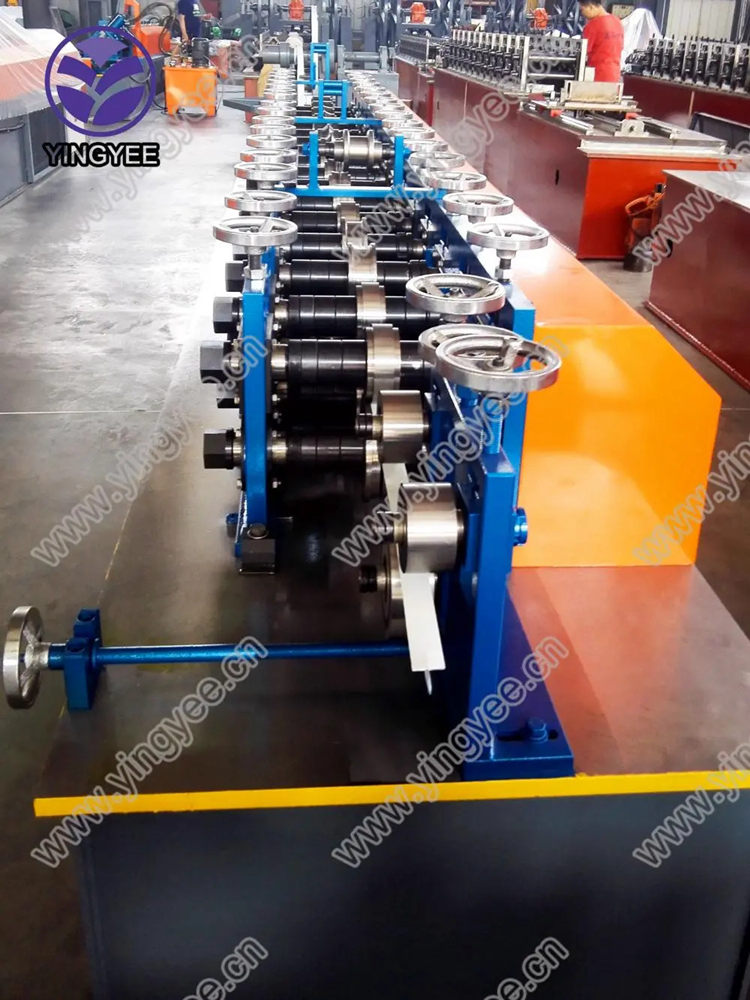
Optimizing the Production of T-Bar and T-Grid Using Roll Forming Machines
In the world of modern manufacturing, efficiency and precision are paramount. The production of structural components like T-bars and T-grids has seen significant advancements, particularly with the introduction of roll forming machines. These machines are designed to produce uniform and high-quality metal profiles that meet the stringent demands of various industries, including construction, automotive, and HVAC. This article delves into the mechanics of roll forming machines and their application in manufacturing T-bars and T-grids, exploring their benefits, process, and potential innovations.
Understanding Roll Forming Machines
Roll forming is a continuous bending operation in which a long strip of metal is fed through a series of specially designed rollers. Each roller gradually shapes the metal until the desired profile is achieved. Roll forming machines are highly adaptable, capable of producing complex shapes while maintaining high levels of accuracy and repeatability.
The basic components of a roll forming machine include the roll stations, which are arranged in a specific sequence to progressively shape the material, and the feed mechanism that pulls the metal through the rollers. The machines can operate with a variety of materials, including steel, aluminum, and other alloys, making them versatile in the production of T-bars and T-grids.
The Production Process of T-Bars and T-Grids
The manufacturing process begins with selecting the appropriate material, often cold-rolled steel or galvanized steel, which provides strength and corrosion resistance. The metal strip is fed into the roll forming machine where it passes through a series of rollers designed to achieve the precise shape of T-bars or T-grids.
1. Material Preparation The metal strip is coiled and uncoiled using a decoiler. It is then cleaned and prepared to ensure optimal adhesion and finish.
2. Roll Forming The prepared metal strip enters the roll forming machine, progressively passing through the rollers. Each roller applies pressure to bend and shape the strip. The design of the rollers is crucial; they must be engineered to produce the specific profile of the T-bar or T-grid while minimizing material waste.
3. Cutting and Finishing Once the desired shape is formed, the elongated product is cut to length based on specifications. The cutting process can include precision cutting techniques to ensure clean edges. Additional finishing processes such as painting, coating, or galvanizing may also be applied to enhance durability and aesthetic appeal.
4. Quality Control Rigorous quality control measures are implemented to ensure that each batch meets industry standards. This can involve dimensional checks, material testing, and surface quality inspections.

Benefits of Using Roll Forming for T-Bar and T-Grid Production
The use of roll forming machines for T-bar and T-grid production offers several significant advantages
- Efficiency Roll forming is a rapid process that allows for high-volume production, reducing overall manufacturing time.
- Material Utilization The design of the roll forming process minimizes scrap material, making it a cost-effective solution for manufacturers.
- Precision and Consistency With the ability to produce uniform profiles, roll forming ensures that each component meets exact specifications, which is critical in applications requiring structural integrity.
- Versatility Roll forming machines can be adapted to produce a variety of profiles, making it possible to manufacture different types of T-bars and T-grids without needing to invest in separate machinery.
- Reduced Labor Costs Automation capabilities in modern roll forming machines reduce the need for manual labor, lowering operational costs.
Innovations and Future Trends
As technology continues to evolve, the roll forming industry is poised for innovations that will further enhance the production of T-bars and T-grids. The integration of smart manufacturing techniques, such as IoT and AI, can optimize production schedules, predict maintenance needs, and improve overall operational efficiency. Additionally, advancements in roller design and materials could lead to faster processing speeds and better precision.
In conclusion, the role of roll forming machines in the production of T-bars and T-grids cannot be overstated. Their efficiency, precision, and versatility make them indispensable in contemporary manufacturing processes. As technology continues to advance, it is likely that the roll forming industry will further refine and improve its methodologies, paving the way for even greater innovations in structural component manufacturing. This evolution not only promises benefits for manufacturers but also improves the construction and infrastructure sectors by delivering reliable and high-quality components.